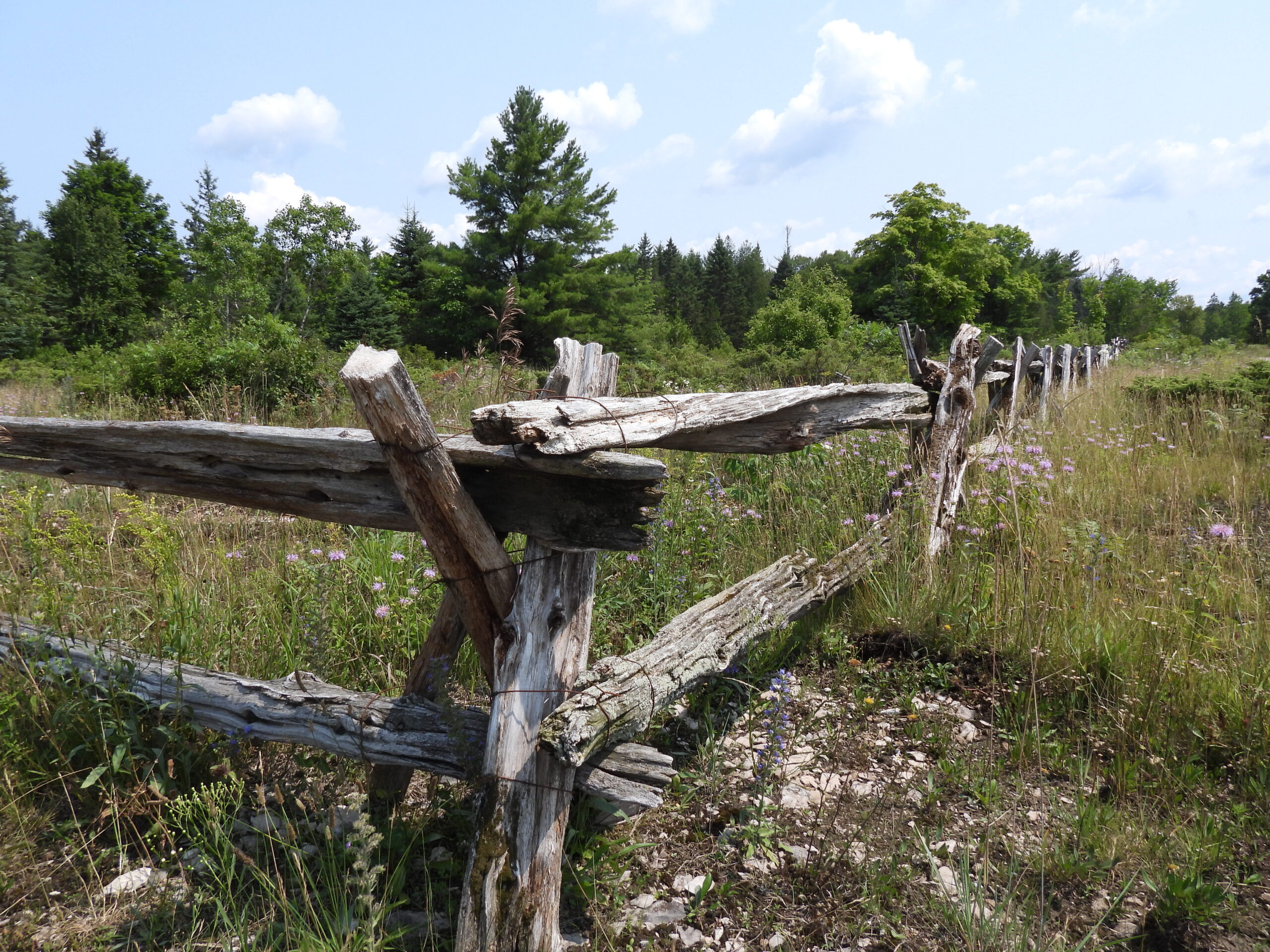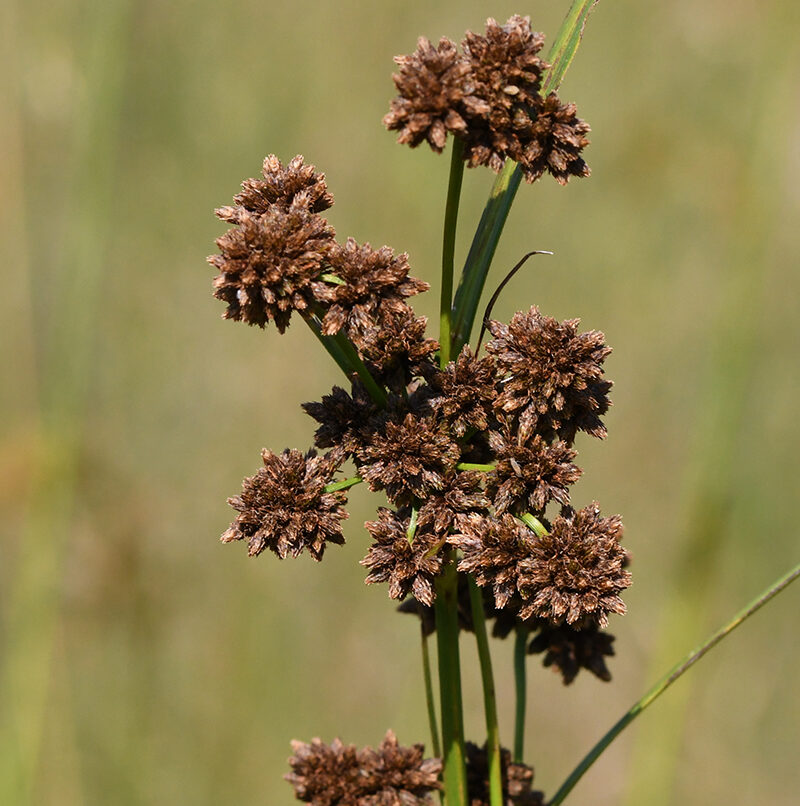Size: 417-acres (169 hectares)
Status: Open to the Public, no trails (closed annually November to December)
Protected: Aug 31, 2023
Donors: Deverell-Morton family, Greenlands Conservation Partnership Program, Natural Heritage Conservation Program and the Ecological Gifts Program through the Government of Canada, Corridors Campaign supporters
Background:
The property has been in the Deverell family since the mid 1800’s. The family were settlers to the area, and had a sawmill, sugarbush and gravel pit. As farmers, they had pasture lands and a deep connection to the land. The first parcel of land the family bought was two dollars an acre. Today, the family and decendants have enjoyed exploring the landscape – finding fossils and salamanders.
Landscape and Species:
- The property includes a willow thicket swamp which connects Deverells Creek to the Head River and Lake Dalrymple;
- With partners like Nature Conservancy of Canada and Ontario Parks, over 10,000-acres of land is now protected in the Carden Alvar;
- Connecting properties like this are important for large mammals like Moose, which have a 50 square mile home range.
Visit this Nature Reserve:
There are no public trails but it is open to visit. There is a Nature Reserve sign on Alvar Road.
History of the Property:
When I sat down with Patricia Morton, a descendent of the Deverell family, I learned so much about the family and their connection to the area over five generations.
If you drive around Lake Dalrymple, you will see the Deverell family name. On street signs and maps, it’s clear the Deverell family has been there a long time, since the mid 1800’s in fact. The family were settlers to the area, and had a sawmill, sugarbush and gravel pit. As farmers, they had pasture lands and a deep connection to the land. The first parcel of land the family bought was two dollars an acre and over the years they bought more, accumulating 800-acres by 1874. Their connection to the land was one of survival, growth and enjoyment. It was in their nature to care for the land - after all, it was their livelihood. As we protect what will now be known as the Deverell-Morton Nature Reserve and increase the number of acres under our care, the family’s legacy also grows.
Patricia Morton married Garnet Morton in 1966 and their family grew. Now with three children and five grandchildren, the family has continued to enjoy the land. They have found fossils and fascinating creatures over the years, adding to the intrigue and love of the landscape. After Garnet passed away, and on the tail end of the pandemic, the family had a conversation about future plans for their land and homes. Pat and Garnet always said that they wanted the land to go to the Conservancy. When I asked if Garnet would be pleased to know it was happening, Pat responded, “Oh yes. So would my father. So would my grandfather. It’s in our nature to care about the land”. She said it was the right time to make it happen - the land is a part of the family’s legacy.”
When asked about reasons for wanting the property to be protected, we had a long conversation about climate change and development. “We have to have it to sustain life,” Pat shared. We are all witness to changes in our landscapes and our communities over the years. What will be left? What will our grandchildren have?
Pat shared that she would encourage other land owners to consider protecting the natural heritage of the region. “It comes down to how do they value the land.”
Through working with the Conservancy, the property went through the land protection process. First, The Conservancy Biologist visited the site to assess its ecological significance. When a project meets our criteria we can submit a case for ecological sensitivity to Environment and Climate Change Canada’s (ECCC) Ecological Gifts Program.
If accepted by ECCC, we proceed with a full appraisal of the property and submit it for the approval of the land owner and ECCC. This appraisal gives the Conservancy the amount available for a tax receipt. So, if a donor chooses to donate $100,000 worth of their property’s value, they receive a tax credit for the same amount, $100,000 that they can apply to their regular taxes for ten years! If a property is inherited, Capital Gains are reduced to zero. We are grateful to the Deverell-Morton family for working with us to protect this property!
When the opportunity to work with the family to protect this piece of Carden arose, the Conservancy was ecstatic for a number of reasons. Carden is a priority area for protection, there are two adjacent nature reserves already protected and it builds an even stronger corridor, from Canal Lake in the south, to Queen Elizabeth Wildlands Provincial Park in the north.
This acquisition was made possible by the Government of Canada through the Natural Heritage Conservation Program, part of Canada’s Nature Fund. We also received support from the Greenlands Conservation Partnership. A total of $50 million will be invested over four years across the province, including $20 million from the Ontario government, and another $30 million from other sources, such as individual donations and foundation support through the Nature Conservancy of Canada and the Ontario Land Trust Alliance, and other levels of government. Our Corridors Campaign supporters also continue to provide stable support so we can move projects like this forward.
The Deverell-Morton property falls within the Carden Alvar Area of Scientific Natural Interest and fills in a significant piece of the broader Carden corridor. This area connects to the Black River Wildlands Corridor to the north. It is directly adjacent to Wolf Run Alvar Nature Reserve and North Bear Nature Reserve. In partnership with Nature Conservancy of Canada and Ontario Parks, there is over 10,000-acres of land protected in this area.
Our heartfelt thanks to the Deverell-Morton family – Patricia, Garnet, Greg, Tina, Colin and family. This is a gift that will last forever.
Tanya Clark
Fundraising & Engagement Manager, The Couchiching Conservancy






